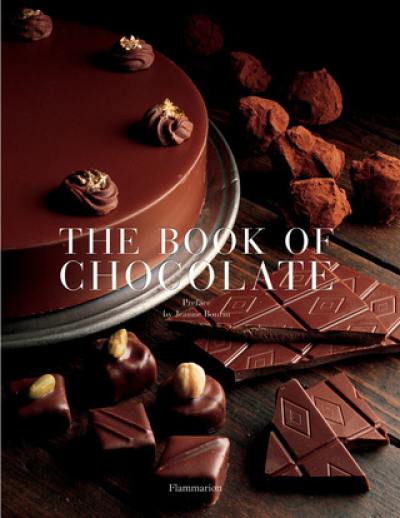
Paru le 29/12/2004 | Pochette 200 pages
Tout public
préface Jeanne Bourin | transl. Tamara Blondel
DAUPHINET
CHOCOLAT FONDANT AU LAIT
Chocolate in all its guises has become an intrinsic part of our lives, something many people cannot live without. This stunning volume traces the history and production of chocolate from the tropical plantations where the cacao bean is cultivated to the finest manufacturers in Europe and the United States. The authors-a panel of internationally renowned food specialists-introduce us to such delights as the rich reine-de-Saba chocolate cake, Mariage Frères' tea-flavored chocolates, and classic Godiva pralines in this revised and updated new edition.
Chocolate, the world's favorite confection, was unknown in Europe before the sixteenth century, when it was brought back from the Americas by the Spanish conquistadors. Originally consumed as a highly spiced drink and attributed with curative, even aphrodisiacal powers, by the eighteenth century, chocolate-served steaming hot with' milk and sugar in delicate porcelain cups-had become a favorite indulgence in elegant aristocratic homes and royal courts.
In England, the great Quaker chocolate-producing families, like the Cadburys, promoted chocolate as a "healthful, flesh-forming" drink, which they hoped would replace gin in the cups of the working class. To further their ideals of enlightened capitalism, the Cadbury brothers established a "model village" at Bourneville for the workers at the chocolate factory. Cadbury introduced "French Eating Chocolate" in 1842, and the commercial chocolate bar was born, though it was not to gain popularity until the end of the century.
Chocolate had been known in North America via Europe since. at least 1765, when Dr. James Baker of Massachusetts established the company that today still produces Baker's Chocolate. As in Great Britain, it was not until the nineteenth century that chocolate became truly widespread, due in great part to the enthusiasm of Milton S. Hershey-a caramel manufacturer from Pennsylvania-when he saw German chocolate-making machinery at the Chicago World's, Fair in 1893. Two years later, in 1895, the first Hershey's Milk Chocolate Bar was sold.
Illustrated with vintage advertising posters and chocolate packages, fine paintings, and lavish, specially commissioned photographs, the revised edition of this beautifully designed book also features an updated "Connoisseur's Guide" to the finest purveyors of chocolate throughout the : world, as well as ten sinfully good recipes. A perfect gift for Easter, Valentine's Day, or any occasion, The Book of Chocolate offers a stunning visual feast for chocolate lovers everywhere.
Jeanne Bourin, the renowned French novelist and historian, evokes her lifelong love of chocolate in the preface. John Feltwell, a British naturalist and Nathalie Bailleux, a French historian collaborate on the chapter, "Cacao Plantations." Pierre Labanne, a journalist and collector of chocolate memorabilia, provides the chapter, "The History of Chocolate." In the chapter "Great Names In Chocolate," a team of journalists investigate the finest chocolate manufacturers in the world. Odile Perrard, writes the sections on France, Belgium, and the Netherlands; Mariarosa Schiaffino, author of Chocolate in the Simple Pleasures collection published by Webb & Bower, provides an analysis of Italian chocolate; Régine Kopp, a journalist, discovers the delights of Swiss chocolate; Corby Kummer, a contributing editor at The Atlantic Monthly and author of The Joy of Coffee tells the story of chocolate in the United States and Great Britain ; and Cristina Pauly, an Italian journalist, samples the riches of Vienna. Hervé Bizeul, a celebrated French chef and sommelier provides the perfect finale in his final chapter, "The Taste of Chocolate."